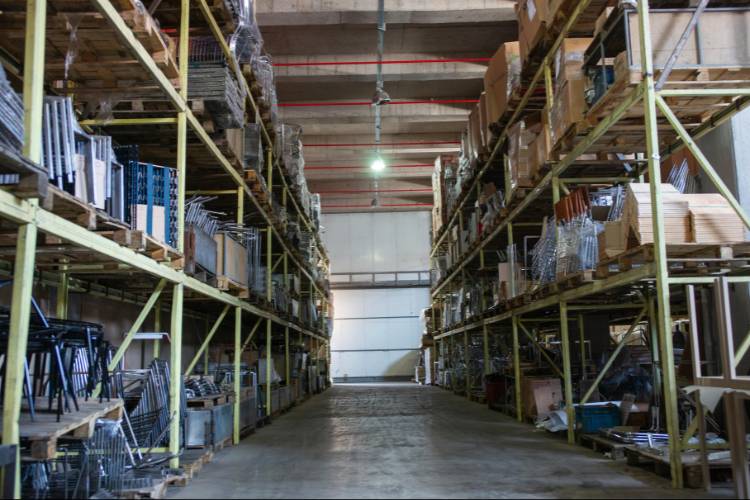As a construction executive, you know exactly how unpredictable this industry can be. One minute, you have plenty of cash in the bank, the next, cash flow is so strained that you’re wondering if you have to pass up a massive project or dip into your retirement savings. This is why having and acquiring multiple working capital options before you need them is crucial for your business growth and stability. In this article, we’ll dive deeper into why thinking about working capital proactively is so important for subcontractors, including best practices for how to achieve more working capital.
Table of Contents
Why Acquire Capital in Advance?
You might be thinking, “We have enough sources of capital,” or “Why would we get capital we don’t need?” But in the world of construction finance, relying solely on existing resources or finite working capital options like cash or bank lines of credit can leave you vulnerable to unexpected challenges or even cause you to miss opportunities. By securing capital proactively, you’re better positioned to:
1. Seize Opportunities
High-paying projects don’t wait around for when you’re ready. Having capital on hand lets you take on these projects with confidence, knowing you have the means to deliver. You’ll be able to quickly secure the necessary materials, hire additional labor, or invest in equipment without worrying about how this opportunity might strain your cash flow.
2. Protect Your Cash
An abundance of working capital options helps you protect one of your most important assets: cash. As your single most flexible source of capital, you don’t want to dip into your reserves for just any expense, depleting it as you go. Cash is king, and having a diverse group of working capital options can help you preserve your cash.
3. Negotiate Better Terms
When you’re not in urgent need of capital, you’re in a stronger position to negotiate favorable terms with lenders or investors. This can result in lower interest rates, better repayment schedules, or more flexible conditions. Rushing to secure financing when you’re in a tight spot often leads to accepting less favorable terms out of necessity.
Other benefits of shopping around for capital early include:
- Time for Due Diligence – You can thoroughly research financing options, ensuring you tightly grasp all terms and conditions before committing, and can compare multiple offers to ensure you get the best deal.
- Relationship Building: Establishing connections with multiple lenders over time could result in better terms if you’ve established a trustworthy reputation and strong payment history.
- Flexibility in Timing – You can secure funding during favorable market conditions, like when interest rates are low.
- Avoiding Predatory Lenders – Acquiring capital proactively helps you steer clear of high-risk lenders who exploit businesses who have more urgent needs.
4. Build Financial Resilience
You’re going to have seasons of high activity with tons of projects, and slower seasons when your WIP thins out. Having a capital buffer helps you weather these fluctuations more easily. You’ll be better equipped to handle unexpected expenses, delays in payment, or temporary downturn without jeopardizing your operations. That financial stability can also improve your relationships with suppliers and employees since you’ll be able to maintain consistent payments even during leaner periods.
5. Invest in Growth and Efficiency
With multiple sources of working capital on hand, you’re in a better position to invest in your business and improve efficiency. This might mean purchasing new equipment that increases productivity, investing in training for your team, making transformative new hires, or upgrading your technology infrastructure. These investments can lead to long-term cost savings and increased competitiveness, but they often require significant upfront capital that might be difficult to secure quickly when the need arises.
Overcoming Hesitation: Addressing Common Concerns about Working Capital
Despite the clear benefits, many subcontractors hesitate to acquire capital before they need it.
Reasons for this include:
Fear of Debt
It’s normal to be cautious about taking on debt, but debt itself shouldn’t make you wary – as long as you’re using debt wisely. Strategic borrowing can be a powerful tool for growth when used correctly and not because you’re in some kind of financial panic. The key is to align the type of debt with the right purchases and conditions. It all starts with a fundamental shift in mindset, where you view debt as a tool to drive your business forward, rather than a burden.
No Immediate Need
Some subcontractors feel that acquiring additional forms of capital without needing to use it immediately is wasteful. But you alone are in control of what you choose to borrow/charge. If you borrow strategically, you’ll only pay interest and fees on transactions that were truly in service of your business growth, cash flow, and profitability. Plus, having readily available funds can be the difference between winning and losing a major project. It’s about being prepared for opportunities or challenges that may come up suddenly. Think of it as financial insurance—you’d rather have it and not need it, than need it and not have it.
Concerns About Approval
You might worry that you won’t be approved for financing if you don’t have an immediate need. However, lenders often look positively on proactive financial planning. It demonstrates foresight and responsible financial management, which can actually improve your chances of approval.
Steps to Acquire Capital Proactively
- Assess Your Financial Health: Before seeking additional capital, take a thorough look at your current financial position. This includes reviewing your cash flow, profit margins, and existing debts. Understanding your financial health will help you determine how much capital you need and what types of financing you’re likely to qualify for.
- Research Your Options: Explore different financing options and their terms with your CFO/controller to understand which options best suit your specific situation.
- Build Relationships: Establish connections with lenders before you need them. This can include local banks, credit unions, and providers of construction-specific financing like Billd. Building these relationships early can lead to more favorable terms and larger limits by the time you do need financing.
- Improve Your Credit Score: A strong credit score opens up more favorable financing options. Pay your bills on time, reduce outstanding debts, and regularly review your credit report for errors to maintain a strong credit score.
- Create a Capital Plan: Outline how you’ll use and repay any acquired capital. This plan should also include your reasoning for why you’re using a specific type of capital for a given expense.
- Regularly Review and Adjust: Your capital needs may change over time. Regularly review your financial position and adjust your capital strategy accordingly.
In the dynamic world of construction subcontracting, being proactive about acquiring capital is essential if you’re serious about growing your business. By securing funds before you need them, you position yourself to grab opportunities and deftly navigate challenges.
The construction industry will always have its ups and downs, but the right financial strategy can help you thrive in almost all conditions. If you want more advice on how to craft a winning working capital strategy, download Billd’s free whitepaper on How to Build a Working Capital Toolkit.







